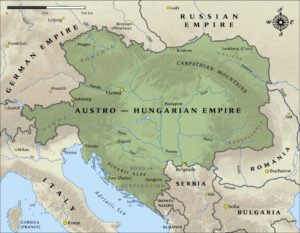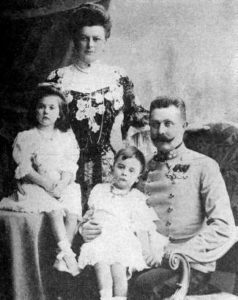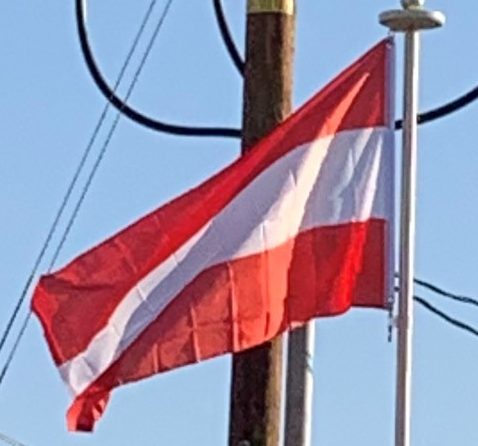Many Austrians of all different social circles such as Georg Ritter von Schönerer promoted strong pan-Germanism in hope of reinforcing an ethnic German identity and the annexation of Austria to Germany. Some Austrians such as Karl Lueger also used pan-Germanism as a form of populism to further their own political goals. Although Bismarck’s policies excluded Austria and the German Austrians from Germany, many Austrian pan-Germans idolized him and wore blue cornflowers, known to be the favorite flower of German Emperor William I, in their buttonholes, along with cockades in the German national colors (black, red, and yellow), although they were both temporarily banned in Austrian schools, as a way to show discontent towards the multi-ethnic empire.

Austria’s exclusion from Germany caused many Austrians a problem with their national identity and prompted the Social Democratic Leader Otto Bauer to state that it was “the conflict between our Austrian and German character.” The Austro-Hungarian Empire caused ethnic tension between the German Austrians and the other ethnic groups. Many Austrians, especially those involved with the pan-German movements, desired for the reinforcement of an ethnic German identity and hoped that the empire would collapse which would subsequently allow an annexation of Austria with Germany.
A lot of Austrian pan-German nationalists protested passionately against minister-president Kasimir Count Badeni‘s language decree of 1897, which made German and Czech co-official languages in Bohemia and required new government officials to be fluent in both languages. This meant in practice that the civil service would almost exclusively hire Czechs, because most middle-class Czechs spoke the German language, but not the other way around. The support of ultramontane Catholic politicians and clergy for this reform triggered the launch of the “Away from Rome” (German: Los-von-Rom) movement, which was initiated by supporters of Schönerer and called on “German” Christians to leave the Roman Catholic Church.
20th Century:
As the Second Constitutional Era began in the Ottoman Empire, Austria-Hungary took the opportunity to annex Bosnia and Herzegovina in 1908. The assassination of Archduke Franz Ferdinand in Sarajevo in 1914 by Bosnian Serb Gavrilo Princip was used by leading Austrian politicians and generals to persuade the emperor to declare war on Serbia, thereby risking and prompting the outbreak of World War I, but it was not the only cause of the war, which eventually led to the dissolution of the Austro-Hungarian Empire. Over one million Austro-Hungarian soldiers died in World War I.

On 21 October 1918, the elected German members of the Reichsrat (parliament of Imperial Austria) met in Vienna as the Provisional National Assembly for German Austria (Provisorische Nationalversammlung für Deutschösterreich). On 30 October the assembly founded the Republic of German Austria by appointing a government, called Staatsrat. This new government was invited by the Emperor to take part in the decision on the planned armistice with Italy, but refrained from this business.
This left the responsibility for the end of the war, on 3 November 1918, solely to the emperor and his government. On 11 November, the emperor, advised by ministers of the old and the new governments, declared he would not take part in state business any more; on 12 November, German Austria, by law, declared itself to be a democratic republic and part of the new German republic. The constitution, renaming the Staatsrat as Bundesregierung (federal government) and Nationalversammlung as Nationalrat (national council) was passed on 10 November 1920.
